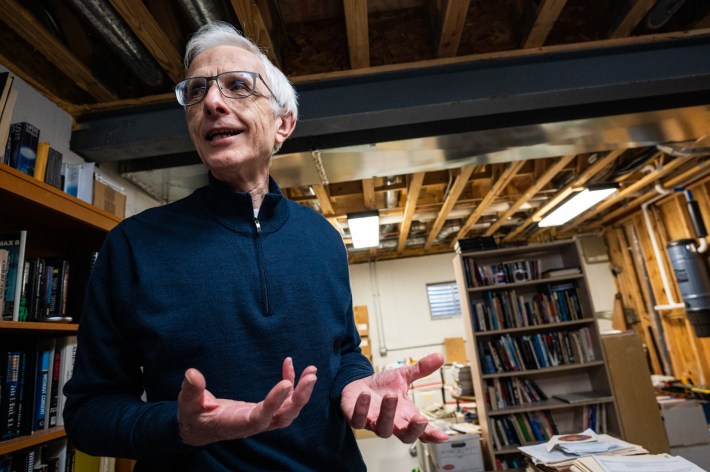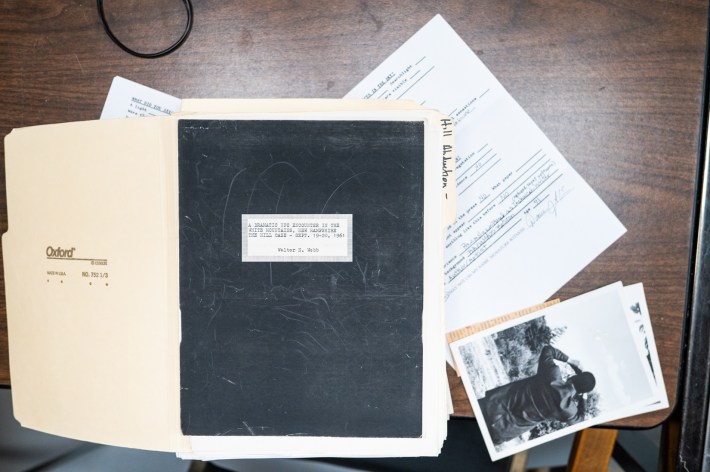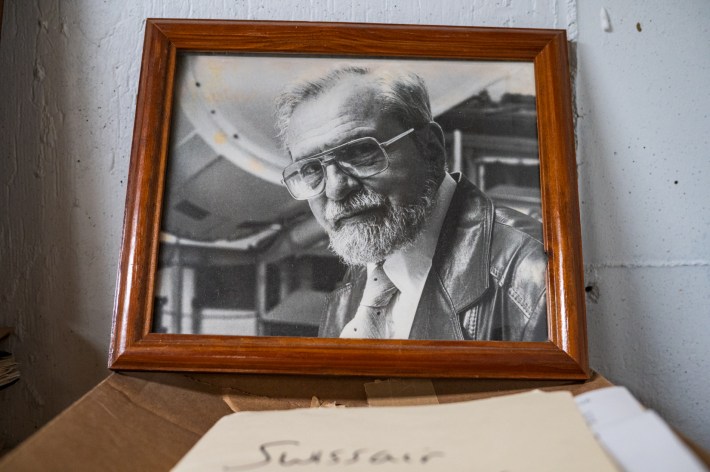Learn About UFO Research At Harold Washington Library This Weekend
DOWNTOWN — For decades, independent scientists have tried to confirm sightings of unidentified flying objects (UFOs) by collecting evidence from witnesses and examining physical evidence.
The public can hear from two local UFO experts about the history of strange sightings in Illinois, the scientific methods used to research UFOs and recent developments in the field 2-4:30 p.m. Saturday at Harold Washington Library Center, 400 S. State St.
The lecture will include photo and video evidence of UFOs as well as personal accounts from speakers Dr. Mark Rodeghier, scientific director of the J. Allen Hynek Center for UFO Studies, and Sam Maranto, investigative researcher for the Illinois Mutual UFO Network.
You can register for the lecture online and attend in person or through Zoom.
“We want to give an insider’s perspective from people who’ve been in the field a long time,” Rodeghier said. “We’ll help people understand how to think about the subject, how to think about what’s happening now and what the prospects are going forward for serious studies of UFOs.”
 Credit: Colin Boyle/Block Club Chicago
Credit: Colin Boyle/Block Club ChicagoThe modern era of UFO sightings started in 1947, Rodeghier said. Early on, people saw disk-shaped objects flying around during the day, but “hardly anyone thought they were extraterrestrial,” Rodeghier said. Instead, researchers assumed the aircrafts were from Russia because of the Cold War, he said.
“Within a few years, it became pretty obvious that these things don’t look like planes and other aircrafts people develop,” Rodeghier said. “They don’t have wings or means of propulsion, so then people were asking, ‘What else could they be?’ And that’s where the extraterrestrial idea came about.”
Each year, the Illinois Mutual UFO Network receives about 8,000 reports of UFO sightings, and about 3 percent of those reports turn out to be “something unconventional,” Maranto said.
“Sightings are nothing new, though,” Maranto said. “What started in 1947 is what we call the modern era, but these things have been recorded in every corner of the earth by all different cultures. It’s incorporated into our histories, myths and stories. It’s a part of us.”
 Credit: Colin Boyle/Block Club Chicago
Credit: Colin Boyle/Block Club ChicagoAlthough people have always wondered about UFOs, U.S. government officials have been somewhat secretive about their research into these phenomena until recently.
In 2022, the U.S. Department of Defense launched the All-domain Anomaly Resolution Office (AARO) with the goal of expanding efforts to “understand and resolve unidentified anomalous phenomena.”
“The fact that AARO exists is a really incredible and stunning development,” Rodeghier said. “Anyone who was born from the late ’60s on has never been around when the government was openly looking into UFOs.”
In July, U.S. government officials confirmed they had been secretly studying the phenomenon for decades during a Congressional hearing where three military veterans said “non-human biologics” have been recovered from crash sites.
These developments led to “increased interest” in the subject from the public, UFO researchers, politicians and law enforcement, Rodeghier said.
“So many people who were maybe neutral on UFOs or not paying any attention to them are now thinking, ‘Gee, if the government is taking it seriously, maybe there’s more to this than I thought,’” Rodeghier said.
 Credit: Colin Boyle/Block Club Chicago
Credit: Colin Boyle/Block Club ChicagoAlthough the federal government only recently resumed its public investigations into unidentified aerial phenomena, research centers — like Illinois Mutual UFO Network and the J. Allen Hynek Center for UFO Studies — have been collecting evidence of UFOs for decades.
The library’s lecture will commemorate the 50th anniversary of the J. Allen Hynek Center for UFO Studies, which Rodeghier currently operates out of his home.
Maranto said local police departments often refer people to these agencies if they report a sighting.
During Maranto’s 20 years as an investigator, he has sifted through thousands of sightings. To determine if a sighting is credible, he compares witness testimony to local astronomy, human aircraft flight patterns and other data to see if the spotted phenomena could be explained in some way.
Mass UFO sightings — where large groups of people spot a UFO at the same time — are particularly helpful for researchers because they can learn what the object looked like from numerous perspectives, said Maranto. He has investigated two mass sightings in suburban Tinley Park and Rockford.
The most “scientifically useful” sightings are when the UFO leaves behind physical evidence of its presence, Rodeghier said. For example, if a UFO leaves an imprint in the ground, scientists can analyze the soil to find out if there are any particles that came from a different solar system.
When investigators identify a UFO sighting that can’t be ruled out by other factors, they interview witnesses, retrieve any physical or video evidence and try to determine the aircraft’s flight path, Maranto said.
If the UFO left a physical trace, scientists try to determine what the UFO is made from, how much energy it emitted, how big it was and how much light it gave off, Rodeghier said.
“For most of the reports we get, we can deduce it’s a prosaic object and not anything anomalous,” Maranto said. “But we know from a historical perspective, there have been hundreds of thousands of genuine reports. The scientific data exists; it’s just a matter of refining it through instrumentation.”
Watch our “On The Block” TV show on The U, CW26 and MeTV.
Listen to “It’s All Good: A Block Club Chicago Podcast”:
This article has been archived for your research. The original version from Block Club Chicago can be found here.


